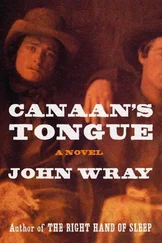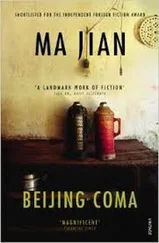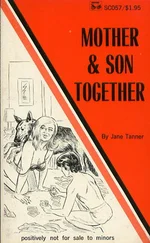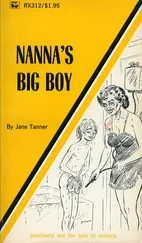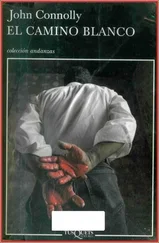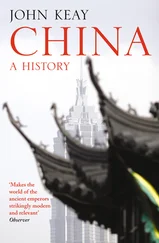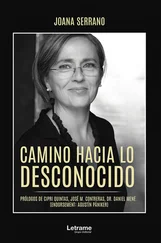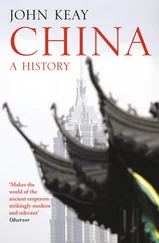Before he found his way “inside” literature, Toomer would have to endure another period when the accumulating responsibilities of being the sole caretaker of his aging grandparents would again drain him of his energy and focus. He had arrived at this state in the spring of 1922. “It was during this spring that I began feeling dangerously drained of energy,” Toomer wrote. “I had used so much in my own work. So much had been used on my grandparents and uncles. I seldom went out…. Sometimes for weeks my grandmother would be laid up in bed, and by now my grandfather was almost helpless. The apartment seemed to suck my very life.” 101As the summer approached, Toomer’s situation became even more desperate: “I felt I would die or murder someone if I stayed in that house another day.” 102Almost out of thin air, he managed to piece together enough funds for a week at Harpers Ferry, West Virginia, where he had often traveled to vacation. He made arrangements for the care of his grandparents during his absence. The time at Harpers Ferry was restorative, but all too short: “I returned with a small store of force which was soon spent…,” remembered Toomer. “The situation was slowly but steadily getting worse…. It was as if life were a huge snake that had coiled about me — and now it had me at almost my last breath.” 103
The much needed relief from this suffocating regimen would eventually come in the form of an invitation from Linton Stephens Ingraham, founder and principal of the Sparta Agricultural and Industrial Institute located in Sparta, Georgia. Ingraham was eager to hire an acting principal while he traveled to Boston to raise funds for his school. Toomer regarded this opportunity as a “God-send.” He accepted Ingraham’s offer to serve as acting principal. Toomer again made arrangements for the care of his grandparents, and prepared for his fateful trip by train to Georgia. Girding himself for what he would encounter on “the southern road,” as his contemporary, Sterling A. Brown, put it, Toomer recalled that “I had always wanted to see the heart of the South. Here was my chance.” 104As acting principal of the Sparta Agricultural and Industrial Institute located in Hancock County, Georgia, Toomer provided continuity at an institution with an important history and mission. Ingraham was the institute’s founder and principal. He was born a slave in Hancock County, Georgia, on August 24, 1855, the property of Judge Linton Stephens. He was taught to read and write by Alexander Stephens, the brother of Judge Stephens, and then matriculated at Atlanta University. He established the institute on October 10, 1910, on three acres of land on his former master’s plantation. The institute was located one mile and a half west of Sparta, approximately eighty miles southwest of Atlanta, Georgia, in the county contiguous to Putnam County, Georgia, the birthplace of the writers Flannery O’Connor and Alice Walker.
At the time of Toomer’s arrival in September 1921, the trustees of the institute had secured funding from the Julius Rosenwald Fund to erect a second building. By 1923 the institute was composed of two buildings perched on fifty-three acres with 210 students. A co-educational institution whose curriculum was a mix of industrial education and grade school instruction in reading, writing, and arithmetic, the institute prepared students for vocations in agriculture and industry. It served the African American community of Sparta, and the communities beyond it. 105Toomer lived, like the teachers, in a residence provided by the institute. “As the [acting] principal, [he] was required to visit homes, businesses, and churches.” 106
Toomer was acting principal at the Institute from September to November 1921. This seminal, three-month sojourn in the South provided him with the materials, inspiration, and much of the setting for what became the first and third sections of Cane. Prior to his first visit to the South, Toomer’s writing lacked a specific sense of place that could serve as the setting and foundation for his art. The landscape of Sparta, Georgia, with its history of slavery and an ancestral past that connected Toomer to his father, was precisely what the emerging writer needed at this vital juncture in his apprenticeship. Under the spell of an alien and yet somehow familiar landscape, Toomer eagerly embraced this new body of impressions and sensations and thoughts, immersing himself in a set of experiences that he would interpret with impressive originality, without being nostalgic in any way. He saw it as a world in transition, and a world of transition for himself. In Sparta, as we have noted, he heard for the first time, he claimed, the traditional Negro “folk-songs and spirituals.” Because he was baptized as a Roman Catholic and reared in an upper-middle-class home in Washington, it is feasible that Toomer could have remained ignorant of the secular and sacred traditions in African American music whose origins were in slavery and that reached their maturity in the post-Reconstruction Jim Crow Deep South.
To be sure, these were not traditions often or openly embraced by the black men and women of Toomer’s class or color background, even at the two all-black schools he attended in Washington. As the eponymous hero of his first play, Natalie Mann , written in 1922 following his stay in Georgia, would assert in almost self-righteous fashion: “What has become of the almost obligatory heritage of folk-songs? Jazz on the one hand, and on the other, a respectability which is never so vigorous as when it denounces and rejects the true art of the race’s past. They are ashamed of the past made permanent by the spirituals.” 107Potentially, Toomer could have come to know the traditions emerging from the “race’s past” in the person of Old Willis, a former slave who “did odd jobs” for the Pinchback family. 108He writes that “I was very fond of [Old Willis].” But Toomer’s encounters with him apparently did not introduce him to the black cultural past that was now unfolding all around him in Sparta. Toomer discovered the slave and folk traditions of which Old Willis was doubtless a vessel as a young adult, precisely when he was struggling to find his voice as an artist, drawing upon these forms and traditions to illuminate his sense of his own identity and the historical experiences that had shaped that identity. As he went about his duties as acting principal in Sparta, he moved daily through a past that was also present, a past that helped him to understand the physical and cultural landscapes out of which he would shape the most original and seminal work of literature published in the entire Harlem Renaissance.
Like his contemporaries in the broad current of American modernism, Toomer was searching for — and ironically would discover in Sparta, Georgia, of all places — a “useable past,” to summon a phrase much in circulation at the time and attributed to the critic Van Wyck Brooks (a classmate of Alain Locke at Harvard), which would give shape and heft to his art, but also allow him further to define his racial identity. As he observed in a letter to Sherwood Anderson, whose novel Winesburg, Ohio left its imprint upon Cane : “My seed was planted in the cane — and cotton-fields, and in the souls of the black and white people in the small southern town. My seed was planted in myself down there.” 109The image of the “seed” that Toomer uses to dramatic effect in his letter to Anderson would function as one of the unifying, fecund conceits in his poem “Song of the Son,” in which he celebrates the ancestral past and cultural landscape of Sparta, the fictional community of Sempter in Cane .
In the same letter to Anderson, who asked Toomer’s permission to write the introduction to Cane, Toomer elaborated upon the deep impact that the land, people, and music of Sparta had upon his sensibility and identity: “Here were cabins. Here Negroes and their singing. I had never heard the spirituals and work songs. They were like a part of me. At times, I identified with my whole sense so intensely that I lost my own identity.” 110.Or, perhaps, we might say that here Toomer found his identity, if not his racial or cultural identity, then most certainly his identity as a creative writer, as the first American modernist writer to represent the complex culture of race in America in such a richly resonant and intricate manner. And because of this, Toomer’s book stands as one of the truly great works of American modernism.
Читать дальше



